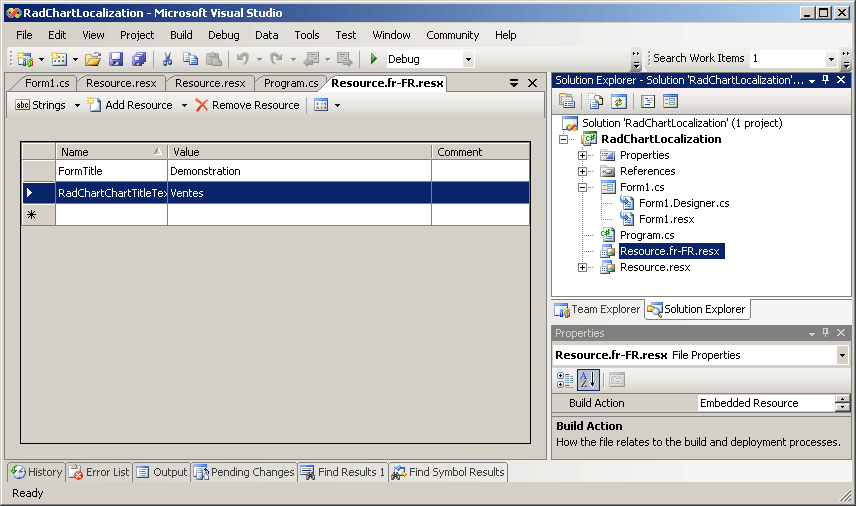

(Select App_GlobalResources, click Upload File on the toolbar and follow the steps in the wizard.) From the System perspective, expand the root of the website ( / ) and then, open or create the App_GlobalResources folder in the root.the string itself, which the user will see on a form. As the name suggests, the element specifies the value of this string, i.e. We recommend that you use Visual Studio to edit this file because it has a more convenient built-in resource editor.Īs you can see in the above XML, each string is represented by a element, the name attribute of which specifies the name of the string you will refer to when localizing forms. Edit the file and add as many elements as you need for each string you want to localize.Īs the file is XML-formatted, you can edit it in any XML editor.When properly configured, the string values in this file will appear as labels and validation messages on forms in the main language. This file will serve as a resource file for your main language. This is a sample comment, not displayed on the site. Copy the following XML into this file:.NET resource file (.resx) and name it something appropriate, for example, “ MainContactForm.resx”. In Visual Studio’s Resource Editor add as many strings as you need for localization.Īlternatively, you can create the file locally with the minimum XML (see below) or already with the localized strings and upload it to the App_GlobalResources folder.

(Right-click App_GlobalResources in Visual Studio’s Solution Explorer > Add > Resource File). Open or add the App_GlobalResources folder in the root of your website.To create a resource file for the main language: These user-friendly messages can be localized. However, you can have them automatically replaced with your user-friendly messages by providing Help texts for the data type fields used in your forms. Note: The system validation messages that appear when validation fails on the user’s input in the field cannot be localized. Set specific properties of the data type used by the Forms Renderer to these strings.Translate corresponding strings in each file.NET resource file for each language used. To have the form labels and validation messages in the language of the localized website, you should: When you localize your website (for example, from English to Danish), by default, the input forms rendered by Forms Renderer will only display their labels and validation messages in the main language (for example, English).


 0 kommentar(er)
0 kommentar(er)
